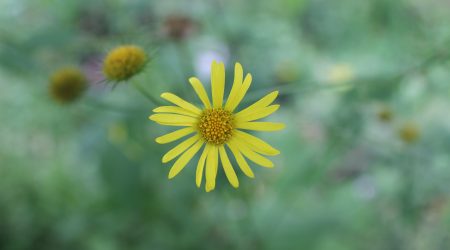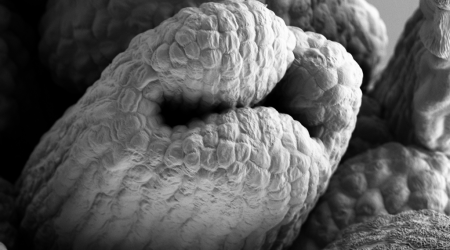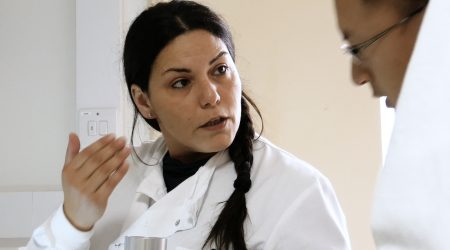Dr Laila Moubayidin aims to reveal the mechanism that determines organ symmetry in plants, at the cellular, molecular and genetic level
Dr Moubayidin’s plant-symmetry group studies the fundamental processes governing how specific molecular signals and cellular activities are recruited to orchestrate the development of an organ.
These processes lead to radial symmetry – around a central axis – or bilateral symmetry – either side of a central line – and have a direct impact on the way that plant organs function, which is ultimately relevant to improving crop performance.
“From a very young age, we learn that our body is composed of two identical halves, a left and right side. This is bilateral symmetry and is a biological feature that allows us, as it does most animals on this planet, to move in different directions. However, if you look at a weed growing on the pavement, it is not straightforward to draw an imaginary line that div ides its body into two identical halves” says Dr Moubayidin.
Instead, the ‘geometry’ of plant shapes can be better appreciated by looking at the individual organs of the adult plant, such its leaves and flowers.
For example, if that same weed on the street were a dandelion, you would be able to easily distinguish the radial symmetry of its spherical seed-head flower (which is optimised for dispersal of seeds by the wind) from the bilateral symmetry of the leaves (which are flat and can be divided in an identical let and right side along the middle vasculature).
Each symmetry type underpins the ability of the plant organ to perform its function in an optimised way for the environment it is in.
For example, flat, bilateral leaves are better optimised for photosynthesis and transpiration in plants evolved to grow in temperate climates. Radial symmetry in flowers in closely linked to the reproductive behaviour of the species.
The type of symmetry a plant organ has is fundamental to its function.
Many biological fundamentals are comparable in plants and animals.
However several plant-specific mechanisms have evolved to account for the profound differences between the two kingdoms.
One of these is the presence of a rigid wall around plant cells, which does not allow cell movement and therefore influences how plant cells grow and divide.
The orientation of growth and division is crucial to reaching a perfectly shaped adult organ, so these processes are tightly regulated by several ‘instructions’.
explains Dr Moubayidin.
This coordination is possible because plant cells are able to sense their position within the tissue and organ they belong to.
The cells coordinate the different instructions provided to them by hormonal and other molecular signals, and environmental and mechanical cues, which in turn feed back into gene expression and other chemical and physical cellular properties.
These molecular instructions can originate from a specific cell or tissue type and act in that same place or in neighbouring cells/tissues, or more distantly, such as from the root to the shoot, and vice versa.
Both short- and long- distance communication are important to determine and maintain cell identity, as well as coordinate growth at a tissue and organ level.
Currently, the lab is approaching the problem of how symmetric shapes form when plant organs start to develop.
Dr Moubayidin says “Our primary focus in the plant-symmetry lab is now on understanding cell-division regulation during the formation of the radial structure at the tip of the plant’s female reproductive structure – the style. This structure develops in the centre of the flower and is therefore vitally important for reproduction, seed production and fruit development”.








